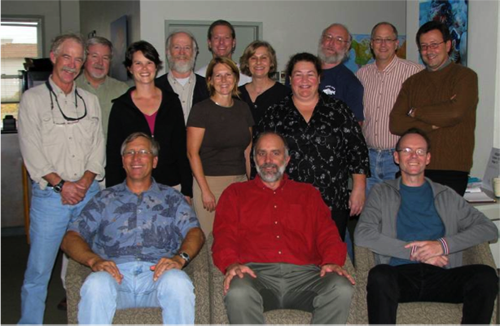Innovations in Environmental Synthesis, Reporting and Governance: Part 3 - National Center for Ecological Analysis and Synthesis
Bill Dennison ·At the National Center for Ecological Analysis and Synthesis, we formed a seagrass working group, recruiting colleagues to help populate a global database of seagrass trajectories. We focused on what we could document in terms of seagrass area, density, biomass and cover.

And then we used that database, interrogated it and wrote scientific papers. The first thing we saw, as expected, was that seagrass is being lost, globally. The initial database we analyzed is only the seagrass area database, and it's the least complete geographically, but nonetheless there's a preponderance of evidence in North America, Europe and Australia, and not a lot in the rest of the world. 58% of the case studies show seagrass declines. Much more concerning, is not the balance of how many were declining and how many were gaining, but that the rate of change is accelerating, and that the rates of declines far outweighed the gains. Over the course of the 1980's and 90's we've had large-scale massive losses. The 2000's aren't complete yet, but the rate of change is accelerating, and overall is negative. We translated this into units of more common measure, and it works out to be a soccer field every half hour since 1990, which is a very conservative estimate. I am delving into this little case study, because I want you to understand my thought process about synthesis. Once we figured this out, we started wondering, "Why are we the only people that care about this? Why isn't this bigger deal?" Then we did an analysis of media reports, and compared that to scientific productivity, and the productivity of coral reefs was somewhat higher than that of seagrass. But, what was overwhelming were the media reports. The media reports indicate that each coral reef paper generated over one hundred and forty media hits. Each seagrass paper had only a handful. We created this concept that we have a seagrass "charisma gap".

Our group sat around and discussed what we needed to do to solve this issue. Do we need to create more scientific papers? No, we have to resolve the charisma gap. So we got to thinking how we can create more charismatic ecosystems? And if you think of the history of environmental movement, we started with charismatic megafauna. For example, the World Wildlife Fund has adopted a panda as their logo, or the call to Save the Whales. Those are iconic species that we all have celebrated, and it’s easy to raise money and awareness for those animals. But we have also transitioned to charismatic ecosystems, tropical rain forests and coral reefs. There is a Canadian organization for tropical education and rainforest conservation (there are not many tropical rainforests in Canada!). Even Mitsubishi is into coral reefs, and that’s just the tip of the iceberg. So we have generated charismatic ecosystems. Now we have to ask the question “How can we generate charisma for the rangelands of Australia, for the seagrass and mangroves along the coast?” “How do we get those ecosystems into public consciousness?” That’s where NCEAS stopped. At NCEAS, we were able to document the decline, but now we must generate charisma. That’s where we evolved our thinking on synthesis.
This blog post was created from a presentation by Bill Dennison to the Terrestrial Ecosystem Research Network in Melbourne, Australia on 29 Mar, 2011 (full powerpoint presentation can be accessed on IAN Press.
About the author
Bill Dennison

Dr. Bill Dennison is a Professor of Marine Science and Vice President for Science Application at the University of Maryland Center for Environmental Science.

